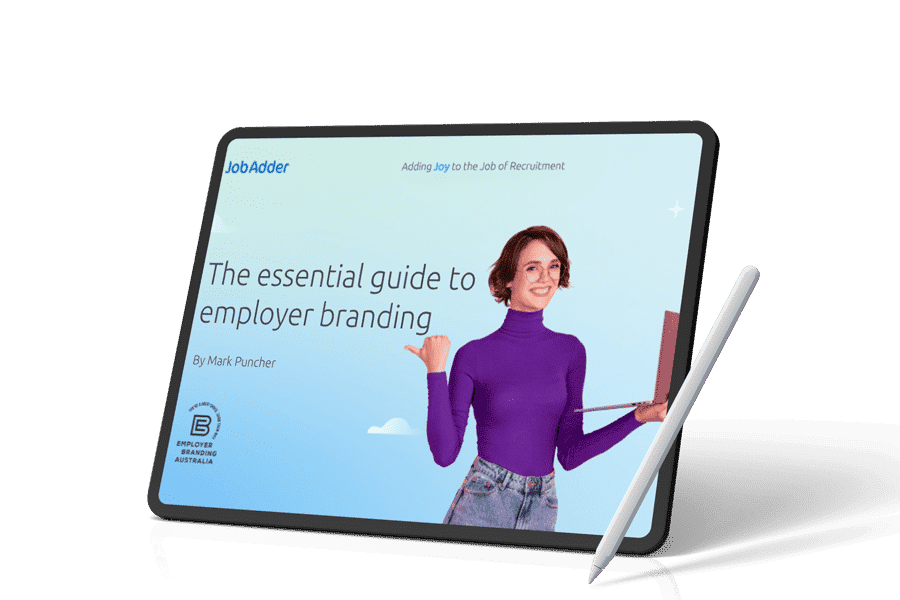Recruitment Blog
How to create a talent strategy for sustainable company growth

A talent strategy focuses on attracting, recruiting and retaining the right talent for your company.
Talent is a critical component that gives companies a competitive edge over competitors. For your company to thrive and compete effectively, your talent management strategy has to be solid, and it must align with your company’s objectives.
A successful talent strategy should empower your company to attract quality candidates, implement a seamless and effective recruitment process and build training and development programs and cultural initiatives that reduce employee turnover.
If a company doesn’t have a successful talent strategy, they might struggle to attract the right candidates with an undeveloped or generic employer brand. They also might struggle to communicate and reinforce their company culture and its positive features, potentially leading to high employee turnover, which is a risk that companies take when they don’t fully develop a successful talent strategy.
Read on to learn more about how your company can introduce its own talent management strategy, and how it can set you up for success.
DOWNLOAD NOW: The essential guide to employer branding
What is talent strategy and talent management?
Going more in-depth, a talent management system runs the full gamut of HR processes. The system must be structured in such a way as to attract, onboard, develop, engage and retain employees with high performance. That means the overall goal is to improve the company’s performance.
A talent strategy differs from talent management in that it’s the process by which a company appeals to and hires qualified individuals. Talent management refers to developing and retaining skilled workers. With talent management, selected personnel must identify any talent gaps present within the business, as well as vacant positions.
They then have to start sourcing and onboarding credible candidates and help them to grow their skills and capabilities alongside company objectives. The retention of top talent and the motivation of employees to keep long-term business goals at the forefront of their minds is crucial.
Why is creating a good talent strategy so important?
A well-rounded method to manage how HR chooses employees and fosters their growth is essential when implementing a sound talent strategy. Focusing on capturing the attention of and securing talented candidates (and therefore future leaders) will drive business success in both the short and long term.
An effective talent strategy includes meticulous assessments that hone in on a worker’s strengths and shortcomings. This happens while also providing chances for development and guidance that will prepare them for leadership positions.
These practices not only refine business results in the immediate future, but they also avoid talent gaps in the long term. Below is a range of big business benefits of an effective talent strategy:
- Attracting the best skill sets and talent for your vacant positions
- Avoiding skill gaps by hiring and retaining the best workers; this also address the future talent needs of the organisation
- Enhancing employee engagement by guaranteeing that the right talent gets positioned in the role that fits their skill set best
- Boosting your employee experience while increasing the employee retention rates
- Upgrading the company culture to improve morale in the workplace and bring out the best performance in employees
- Sustaining a competitive edge over other businesses with similar objectives
How to create an effective talent strategy for sustainable success
Follow these proven practices to develop an impactful talent strategy that will lead to sustainable success for your company.
Ensure your talent strategy evolves with your business strategy
Successful workforce planning seamlessly aligns with a company’s business strategy. The future of the business and its predicted talent requirements needs to be at the forefront of your business model.
Success in any industry hinges on your ability to attract the best talent and adjust with the times. As business goals change, the method with which talent acquisition is conducted must change as well.
Identify the most important competencies to develop
Identifying the areas where your organisation thrives and where there’s a need for improvement is imperative to the process of finding the best talent for the growth of your business.
Talent leaders have to be knowledgeable about any competency deficiencies they notice and how to bring them up to company standards. Talent leaders should address questions such as the following:
- Does your organisation need more people in the same role?
- Do new roles need to be created to fulfil a new need?
- Does your organisation need to develop new skills?
- Are your current skills sufficient?
HR leaders need to familiarise themselves with the relevant metrics and information that will help to identify the needs of the organisation.
Build up your employer branding
Your employer brand is perhaps one of the most important elements in building an innovative and sustainable organisation. Your employer brand and reputation as a great place of work will grow your talent pool and attract top talent to your organisation.
Implementing employer branding and cultural initiatives can make your company a more reputable place to work, reduce employee turnover and increase employee referrals.
Remember, your business can’t thrive without great advertising. You must create good job descriptions which outline exactly what you need. Ensure that the message is clear and accurate, spend time perfecting your jobs ads so you’re capturing the attention of quality candidates.
Keep succession planning in mind
Succession planning describes the process and strategy for replacement planning or, in other words, passing on leadership roles. This strategy is used to pinpoint and develop new leaders who can eventually assume leadership roles once the positions are vacated.
That means that department leaders should engage in performance management to ensure that employees are constantly adapting and developing new skills so that they can eventually assume new roles with more responsibility.
To develop a good talent strategy, not only does recruitment and acquisition need to be accounted for, but employee growth has to be a part of the vision as well.
Create an employee value proposition
An employee value proposition (EVP) is a concept that is closely related to employer branding. To sum it up, it’s the balance of benefits and rewards that companies offer their employees, all in return for their stellar performance in the workplace.
An EVP includes everything that an employer does to draw and retain employees. As you can imagine, this is very important to the success of a business.
Furthermore, an EVP could be the most essential part of a talent strategy because it shows candidates why they should apply for a job with an organisation and what benefits they can expect. Moreover, it’s a useful tool for retaining talent as well. Companies with strong EVPs generally have higher retention rates.
Prioritise company culture
Establishing and maintaining a company culture is essential when creating a productive and inviting work environment.
This culture should galvanise prospective employees to join your organisation and keep them engaged as they work for your company. This is an integral part of any talent strategy.
There is no distinct definition for company culture. However, the following will always hold true: company culture encapsulates the mission, goals, environment, values and overall tone of your entire business.
Below are the many benefits that an excellent company culture brings to an organisation:
- Better talent acquisition
- Higher employee retention
- High morale amongst the workforce
- Better business performance
- Better reputation
- Greater employee fit
Where organisations go wrong with talent strategy
Recurring talent strategy mistakes can cause poor employee retention and poor performance, which can affect your company’s reputation and bottom line.
Below you’ll find some of the most common talent management strategy mistakes:
- Neglecting employees and their development after they’ve been hired
- Poor communication with candidates and employees
- Only thinking in the short term
- Not investing in reskilling or upskilling current employees
- Neglecting problems within your hiring team
- Little accountability and recognition
- Not focusing on cultivating a great company culture
Enhance your talent strategy with JobAdder
It’s clear that an effective talent management strategy can ensure sustained growth for your organisation.
It’s more important than ever to implement strategies and tools that set your company up for success. JobAdder makes the recruitment process easier and a lot more joyful, removing manual processes and admin so you can focus on attracting, interviewing and engaging top talent. Discover more today to boost your company’s talent acquisition strategy and gain that crucial competitive advantage.
To discover more details about the importance of your employer brand, download our free eBook: The essential guide to employer branding.
Need help building your employer brand? Our free eBook has you covered…

Related blog posts

By Nina Mapson Bone Recruitment KPIs In over a quarter of a century of working in recruitment, I’ve worked in …
Ready to get started?
Talk to one of our friendly team members


